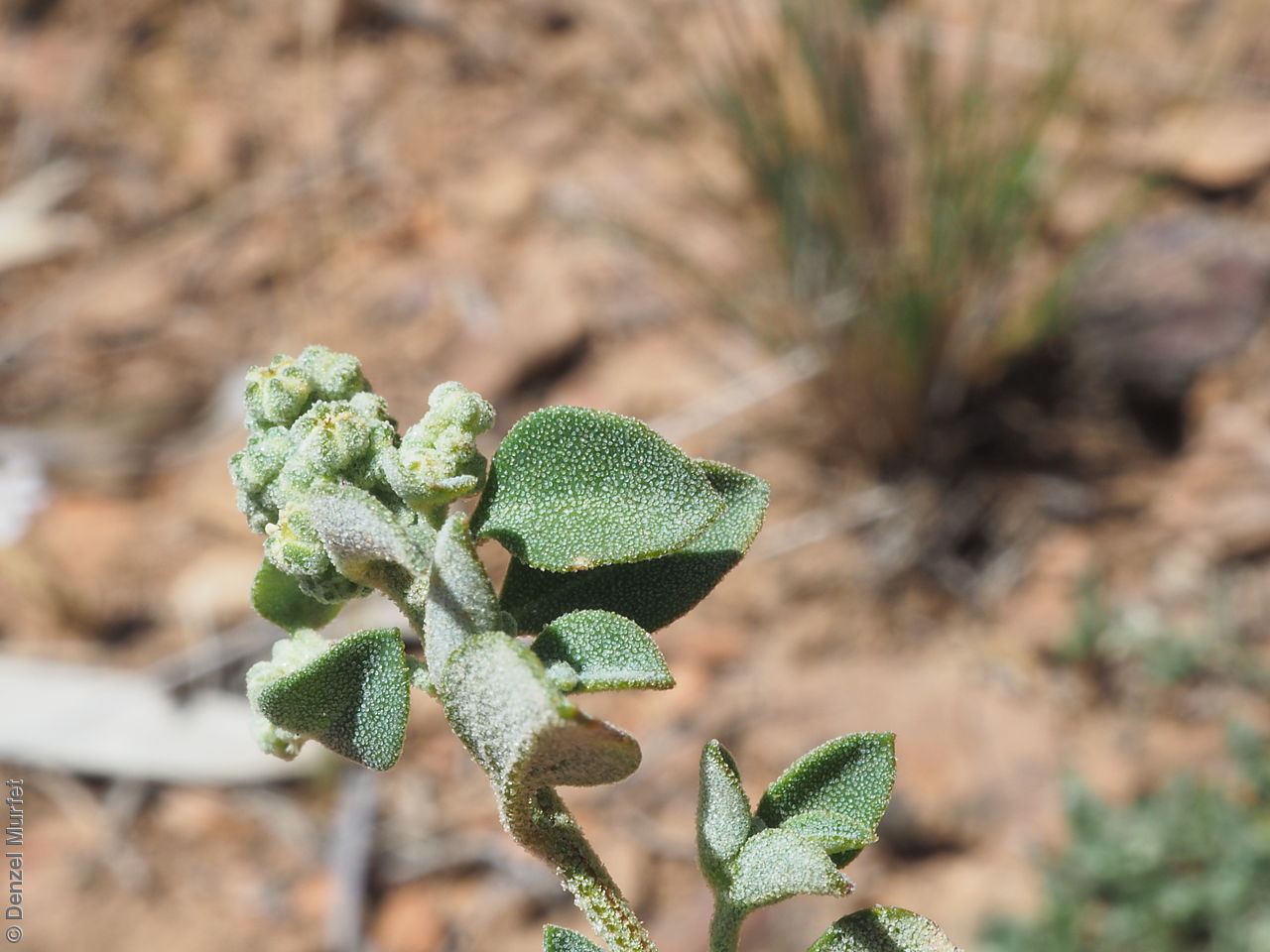Small-leaf Goosefoot
Display all 12 images












Regional Species Conservation Assessments per IBRA subregion.


Least concern
Near threatened
Rare
Vulnerable
Endangered
Critically endangered
Extinct
Data deficient
Adelaide
Arkaroola
Ceduna
Coober Pedy
Hawker
Innamincka
Marla
Marree
Mount Gambier
Oodnadatta
Renmark
Wudinna
Keith
Yunta
Display IBRA region text
| Lucindale (NCP03) | Naracoorte Coastal Plain | Rare (IUCN: RA d(i,ii)) [edge of range] |
| Fleurieu (KAN02) | Kanmantoo | Near Threatened [grassy habitat & mallee woodlands] |
| Mount Lofty Ranges (FLB01) | Flinders Lofty Block | Rare (IUCN: RA d(ii)) [grassy habitat & mallee woodlands] |
| Broughton (FLB02) | | Least Concern [hardy] |
| Olary Spur (FLB03) | | Least Concern [hardy] |
| Southern Flinders (FLB04) | | Least Concern [hardy] |
| Northern Flinders (FLB05) | | Near Threatened [grassy woodland sp] |
| Central Flinders (FLB06) | | Near Threatened [grassy woodland sp] |
| Southern Yorke (EYB01) | Eyre Yorke Block | Least Concern [hardy] |
| St Vincent (EYB02) | | Least Concern [hardy] |
| Eyre Hills (EYB03) | | Least Concern |
| Talia (EYB04) | | Rare (IUCN: RA d(i,ii)) |
| Eyre Mallee (EYB05) | | Least Concern |
| South Olary Plain (MDD01) | Murray Darling Depression | Rare (IUCN: RA d(i)) |
| Murray Mallee (MDD02) | | Least Concern |
| Murray Lakes and Coorong (MDD03) | | Rare (IUCN: RA d(i,ii)) [edge of range] |
| Lowan Mallee (MDD04) | | Least Concern |
| Wimmera (MDD05) | | Rare (IUCN: RA d(i,ii)) |
| Gawler Volcanics (GAW02) | Gawler | Rare (IUCN: RA d(ii)) |
| Gawler Lakes (GAW03) | | Rare (IUCN: RA d(ii)) |
| Maralinga (GVD03) | Great Victoria Desert | Rare (IUCN: RA d(ii)) |
| Yellabinna (GVD06) | | Rare (IUCN: RA d(i,ii)) |
| Murnpeowie (STP03) | Stony Plains | Rare (IUCN: RA d(i,ii)) [edge of range, limited habitat] |
| Lucindale (NCP03) | Naracoorte Coastal Plain | Rare (IUCN: RA d(i,ii)) [edge of range] |
| Fleurieu (KAN02) | Kanmantoo | Near Threatened [grassy habitat & mallee woodlands] |
| 6 of 6 subregions | Flinders Lofty Block | Least Concern , Near Threatened , Rare |
| 5 of 5 subregions | Eyre Yorke Block | Least Concern , Rare |
| 5 of 6 subregions | Murray Darling Depression | Least Concern , Rare |
| 2 of 8 subregions | Gawler | Rare |
| 2 of 4 subregions | Great Victoria Desert | Rare |
| Murnpeowie (STP03) | Stony Plains | Rare (IUCN: RA d(i,ii)) [edge of range, limited habitat] |
Botanical art
Kath Alcock paintings: 3
Prior names
Chenopodium microphyllum, nom.illeg., non Thunb.(1794)
Chenopodium cochlearifolium
Chenopodium pseudomicrophyllum
Common names
Small-leaf Goosefoot
Etymology
Chenopodium from the Greek 'chen' meaning goose and 'pod' meaning foot, referring to the shape of the leaves in some species. Desertorum from the Greek 'desertorum' meaning to grow in deserts. Microphyllum from the Greek 'micros', meaning small and 'phyllon', meaning leaf.
Distribution and status
Found in the southern part of South Australia from the Flinders Ranges, Eyre Peninsula to the upper South-east, growing in a range of habitats. Also found in all mainland states. Native. Common in South Australia. Rare in the Northern Territory. Common in the other States.
Herbarium regions: Flinders Ranges, Eyre Peninsula, Northern Lofty, Murray, Yorke Peninsula, Southern Lofty, South Eastern
AVH map: SA distribution map (external link)
Plant description
Intricately branched prostrate to decumbent perennial. Stems and leaves variably covered with globose or saucer-shaped vesicular hairs. Leaves petiolate, ovate to circular, to 10 mm long, mealy below, glabrescent above. Inflorescences not or only shortly exceeding leaves, tepals covered on outer surface with globoid or saucer-shaped vesicular hairs. Flowering possible all year. Fruits are enveloped by perianth that are covered with white vesicular hairs. Seeds are black globular reniform seed to 1 mm diameter, slightly rugulose. Seed embryo type is peripheral.
Seed collection and propagation
Collect seeds between January and December. Collect fruit-heads that are maturing, turning pale brown firm black seeds inside. Place the fruits-heads in a tray and leave to dry for one to two weeks. Then gently rub the fruits with your fingers or a rubber bung to dislodge the seeds. Use a sieve to seperate the unwanted material. Store the seeds with a desiccant such as dried silica beads or dry rice, in an air tight container in a cool and dry place. This species has physiological dormancy that needs to be overcome for the seed to germinate (e.g. nicking or softening the seed coat).













